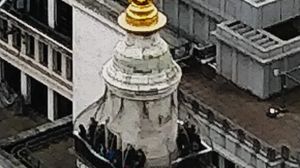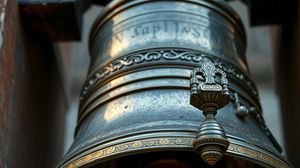
The Bank of England, located on Threadneedle Street in the heart of London's financial district, is one of the world's oldest central banks, with a history that dates back to its founding in 1694. It has stood the test of time, remaining a cornerstone of financial stability in the United Kingdom over the centuries.
The building itself is an iconic symbol of the city's financial prowess, with a neoclassical design that reflects both its longstanding authority and the history it upholds. It has undergone various architectural transformations, with the current structure primarily designed by Sir John Soane in the early 19th century.
One of the quirkiest facts about the Bank of England is that it houses one of the world's largest gold vaults. Below ground, it stores thousands of tons of gold, valued at billions of pounds, and the sheer size and security of these vaults have become the stuff of legend.
Visitors are often intrigued to learn that the Bank of England Museum, housed within the bank, offers a glimpse into its rich history and functions. Here, you can discover everything from the origins of banknotes to the pressing issue of forgeries throughout history.
A lesser-known fact is that the Bank of England issued loans during the Napoleonic Wars, a crucial financial endeavor that highlights its longstanding role in supporting national stability during critical times.
The Bank is not only a financial institution but also a part of London's cultural milieu. Its fascinating array of sculptures and murals within its halls add an unexpected aesthetic appeal that captivates visitors who venture inside.
For those interested in economic history, the Bank's archives are a treasure trove of documents that cover centuries of financial and political change in Britain and beyond, providing unique insights into the past impacts of global and domestic events on the economy.

Making the Most of Your Visit:
Visit the Bank of England Museum: It's a hidden gem within the building and is completely free to enter. Make sure to spend some time on the interactive exhibits that explain monetary policy in a simple and engaging way.
Check out the Rotunda: While at the museum, don't miss the Rotunda, which is not only architecturally striking but also houses key exhibits about the Bank's history, including original artefacts from centuries past.
Explore the Courtyard: If you're visiting on a weekday, pop into the Bank's courtyard (subject to access). This beautifully maintained space provides a serene break in the bustling financial district and boasts impressive views of the surrounding architecture.
Look for Sir John Soane's influence: As you tour the museum and the building exterior, keep an eye out for elements of neoclassical design pioneered by Soane, such as open spaces and dramatic skylights, which set the Bank apart from its more modern surroundings.
Keep an ear out for the history of London's gold: The museum highlights fun facts about the gold vaults and their security features. There's a fascinating story about early 20th-century gold bars and past attempts at theft!

Visiting Times & Costs:
The Bank of England Museum, situated within the Bank of England, is open to the public and offers free admission. It allows visitors to delve into the rich history of this iconic financial institution.
Opening Hours:
- Monday to Friday: 10:00 AM - 5:00 PM
- Closed on weekends and bank holidays.
Cost: Entry to the Bank of England Museum is free of charge.
Accessibility:
- The museum is accessible to wheelchair users.
- An accessible toilet is available on the premises.
- Guide dogs are permitted.
- For specific accessibility needs, it is recommended to check in advance, as some areas of the historic building may have restrictions.

Address & Map:

Nearby:























